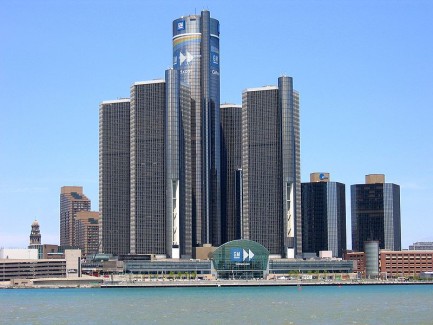Executive Summary
Lessons from the Past for Urban Policy in the Era of Trump
The stunning election of Donald Trump as president throws the future of urban policy into doubt. During the campaign he promised to bring new jobs and improved infrastructure to the inner cities, but so far he has furnished no details. Some of the strategies carried out by cities and states in the past may offer the incoming administration some guidance.
Detroit: Why Bankruptcy? Why Bankruptcy Now?
Written by The Economic Development Curmudgeon
 Like it or not, the Detroit bankruptcy filing is a page turner. What insights might an economic developer glean from Detroit's bankruptcy filing? In this issue, the Curmudgeon culls out a few interesting culprits from the avalanche of different ideas purporting to explain how Detroit got into this revolting situation. What the Curmudgeon proposes to do is simply to step back a bit and subject some of these "causes of bankruptcy" to a review. Do some of these alleged "causes" of bankruptcy have merit? Is there one problem more than any other which is responsible for the bankruptcy filing in 2013? To provide some insight into the Curmudgeon's perspective he suggests that the immediate trigger, and prime cause, of the bankruptcy filing is unfunded pensions and retiree health care benefits. Until Detroit fixes that problem, he believes it makes little to no sense to pour funds in to revitalize or stabilize the city, its infrastructure and neighborhoods. Bankruptcy is the first step in the rebirth of Detroit. It is the way in which the pension--and more importantly, the retiree health care benefits are resolved that offer the most page-turning potential. In the sections below, the Curmudgeon shall pose several questions pertinent to economic developers.
Did Detroit's political leadership stand idly by and watch the city decline?
Did Suburbanization and the Flight of Whites and Jobs Push Detroit in Bankruptcy?
Did Detroit spend itself silly?
The City Implodes: Post-2000 Detroit
What is the 2013 Debt Burden?
For the reader's added enjoyment he includes an optional Part II which explores the relationship of Detroit's current economic base and the decline of the auto industry.
Continue Reading...
Like it or not, the Detroit bankruptcy filing is a page turner. What insights might an economic developer glean from Detroit's bankruptcy filing? In this issue, the Curmudgeon culls out a few interesting culprits from the avalanche of different ideas purporting to explain how Detroit got into this revolting situation. What the Curmudgeon proposes to do is simply to step back a bit and subject some of these "causes of bankruptcy" to a review. Do some of these alleged "causes" of bankruptcy have merit? Is there one problem more than any other which is responsible for the bankruptcy filing in 2013? To provide some insight into the Curmudgeon's perspective he suggests that the immediate trigger, and prime cause, of the bankruptcy filing is unfunded pensions and retiree health care benefits. Until Detroit fixes that problem, he believes it makes little to no sense to pour funds in to revitalize or stabilize the city, its infrastructure and neighborhoods. Bankruptcy is the first step in the rebirth of Detroit. It is the way in which the pension--and more importantly, the retiree health care benefits are resolved that offer the most page-turning potential. In the sections below, the Curmudgeon shall pose several questions pertinent to economic developers.
Did Detroit's political leadership stand idly by and watch the city decline?
Did Suburbanization and the Flight of Whites and Jobs Push Detroit in Bankruptcy?
Did Detroit spend itself silly?
The City Implodes: Post-2000 Detroit
What is the 2013 Debt Burden?
For the reader's added enjoyment he includes an optional Part II which explores the relationship of Detroit's current economic base and the decline of the auto industry.
Continue Reading...
